Abstract
Activation of the complement cascade by immunoglobulin G (IgG) plays a major role in the host defense against pathogens. Using recombinant human antibodies specific for the leucocyte antigen CD52, different allotypes of human IgG1 subclass were compared for their ability to activate human complement. In addition the roles of the different length hinge regions of IgG1 and IgG3 were investigated. It was found that the naturally occurring allotypes G1m(a,z) and G1m(f), and one artificially created isoallotype, G1m(null), did not significantly differ in their overall ability to cause cell lysis. However, some differences in binding of individual components of the classical activation pathway were detected. More of the complement component C1s seemed to be associated with the allotype G1m(f), although this did not result in an overall improvement in lytic potency. In this system the wild-type IgG3 was found to be less effective in complement lysis than IgG1. By shortening the hinge region of IgG3 to resemble that of an IgG1 antibody, increased complement binding was observed compared with that of wild-type IgG3 and the IgG1 allotypes. The overall lytic potency of the antibody was also improved compared with wild type IgG3 and it was also slightly more effective than the IgG1 allotypes.
Full text
PDF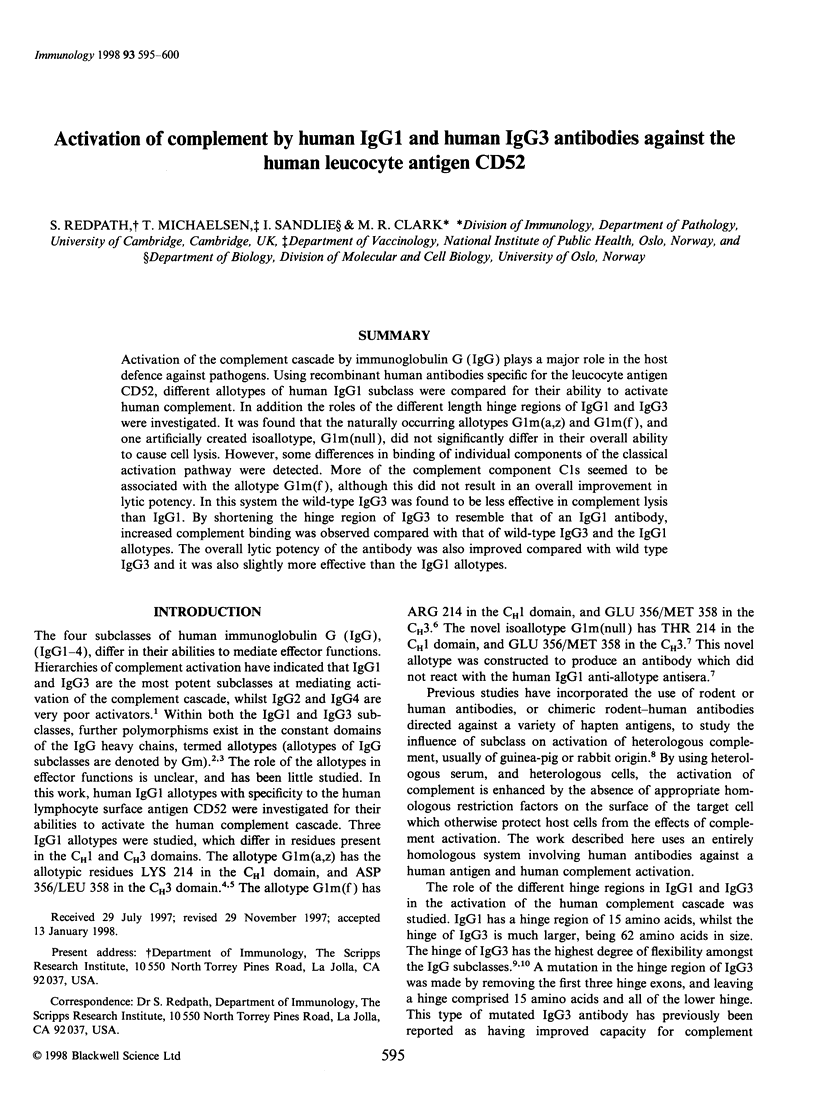

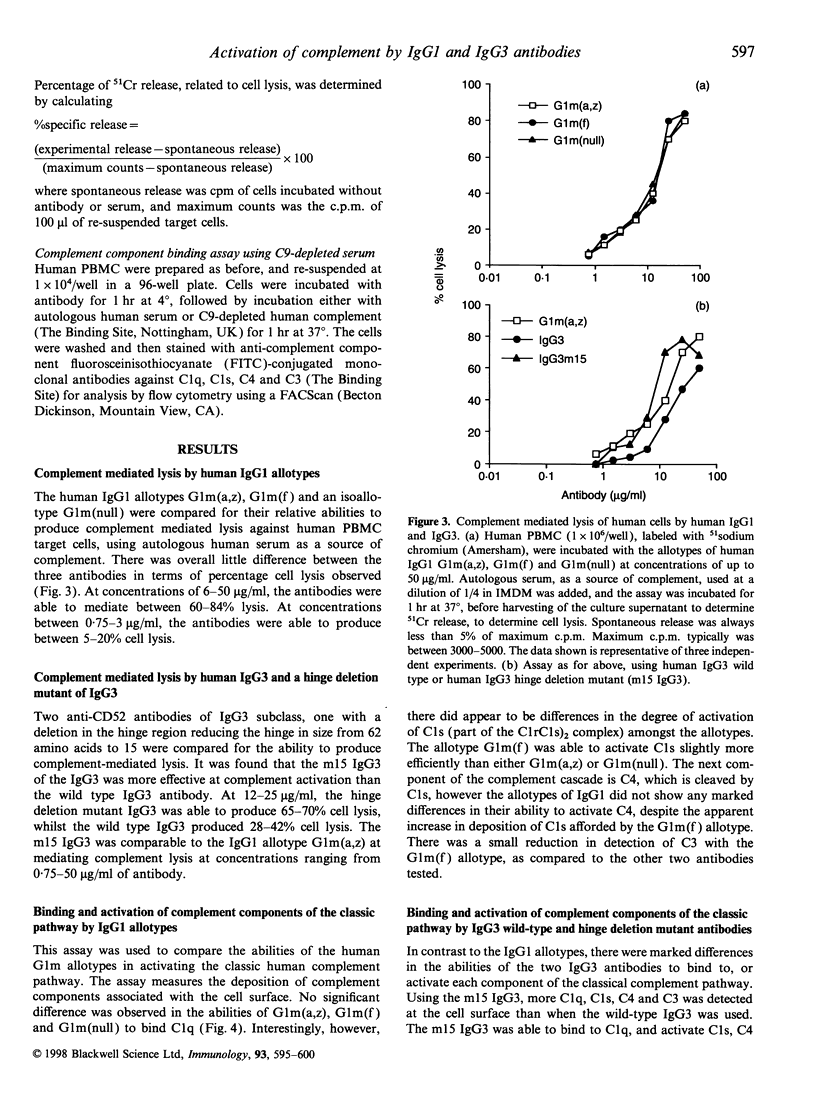
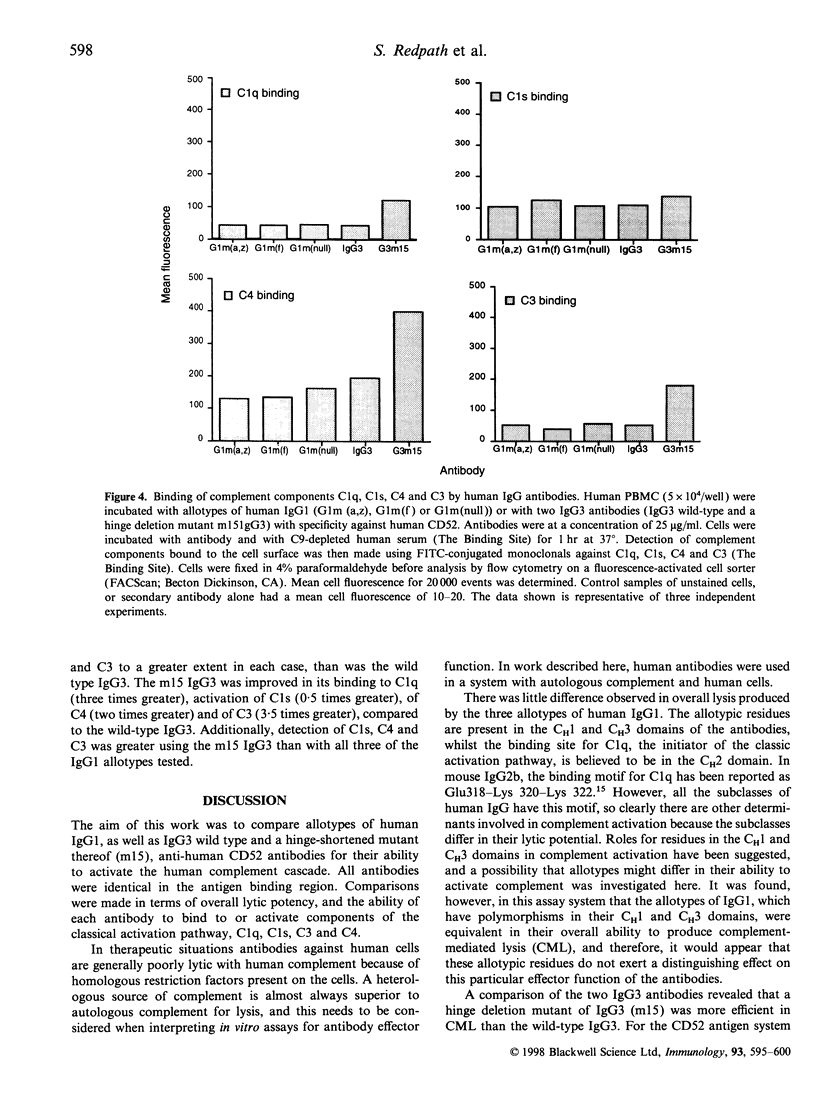
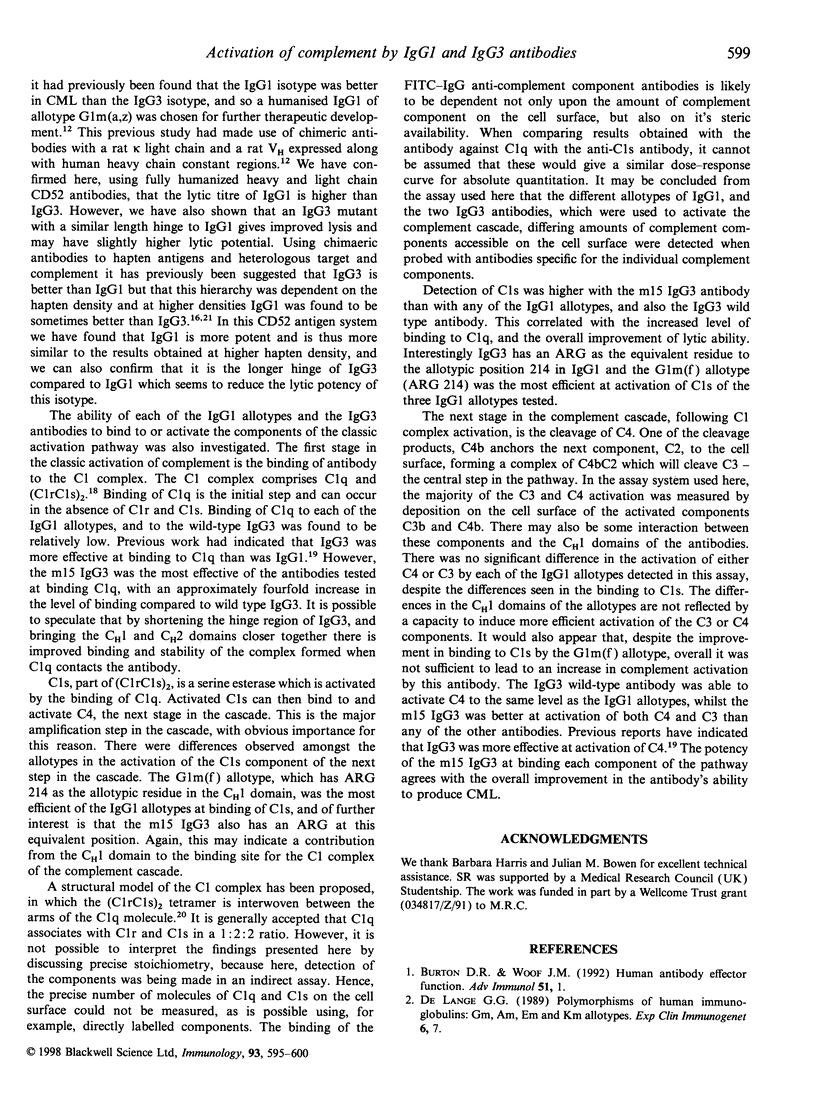
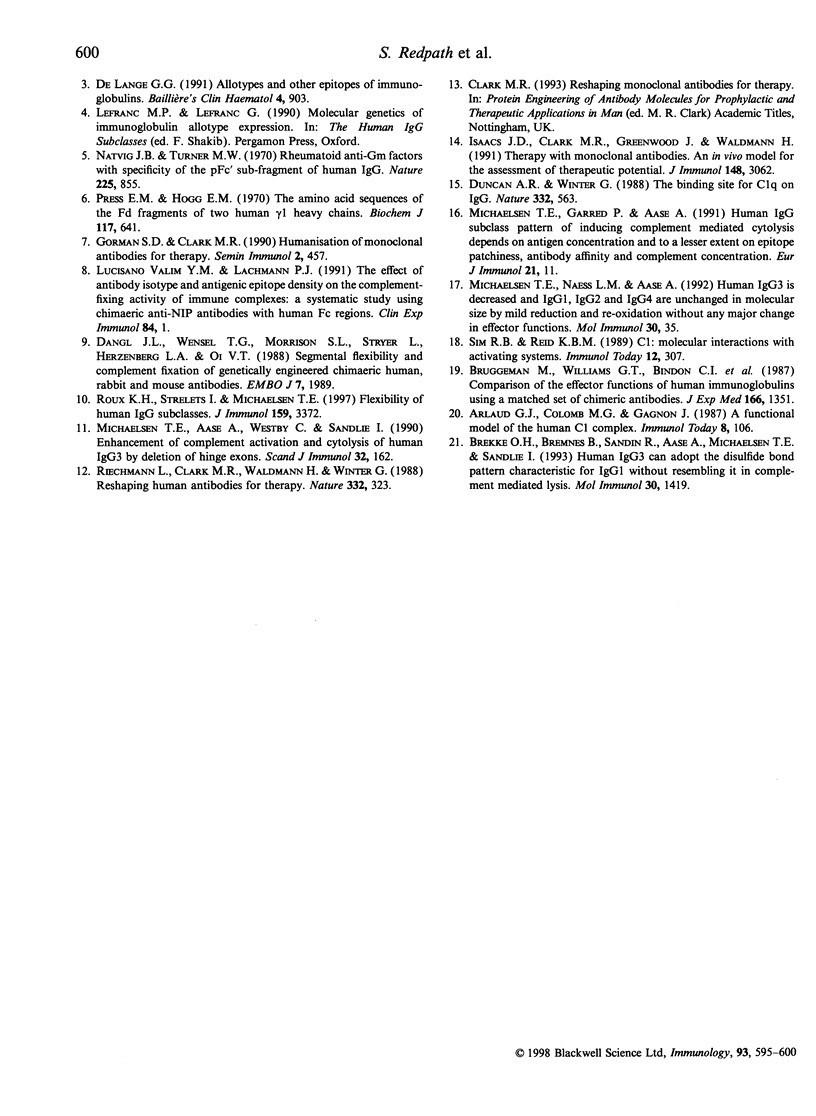
Selected References
These references are in PubMed. This may not be the complete list of references from this article.
- Brekke O. H., Bremnes B., Sandin R., Aase A., Michaelsen T. E., Sandlie I. Human IgG3 can adopt the disulfide bond pattern characteristic for IgG1 without resembling it in complement mediated cell lysis. Mol Immunol. 1993 Nov;30(16):1419–1425. doi: 10.1016/0161-5890(93)90103-i. [DOI] [PubMed] [Google Scholar]
- Brüggemann M., Williams G. T., Bindon C. I., Clark M. R., Walker M. R., Jefferis R., Waldmann H., Neuberger M. S. Comparison of the effector functions of human immunoglobulins using a matched set of chimeric antibodies. J Exp Med. 1987 Nov 1;166(5):1351–1361. doi: 10.1084/jem.166.5.1351. [DOI] [PMC free article] [PubMed] [Google Scholar]
- Burton D. R., Woof J. M. Human antibody effector function. Adv Immunol. 1992;51:1–84. doi: 10.1016/s0065-2776(08)60486-1. [DOI] [PubMed] [Google Scholar]
- Dangl J. L., Wensel T. G., Morrison S. L., Stryer L., Herzenberg L. A., Oi V. T. Segmental flexibility and complement fixation of genetically engineered chimeric human, rabbit and mouse antibodies. EMBO J. 1988 Jul;7(7):1989–1994. doi: 10.1002/j.1460-2075.1988.tb03037.x. [DOI] [PMC free article] [PubMed] [Google Scholar]
- Duncan A. R., Woof J. M., Partridge L. J., Burton D. R., Winter G. Localization of the binding site for the human high-affinity Fc receptor on IgG. Nature. 1988 Apr 7;332(6164):563–564. doi: 10.1038/332563a0. [DOI] [PubMed] [Google Scholar]
- Gorman S. D., Clark M. R. Humanisation of monoclonal antibodies for therapy. Semin Immunol. 1990 Nov;2(6):457–466. [PubMed] [Google Scholar]
- Isaacs J. D., Clark M. R., Greenwood J., Waldmann H. Therapy with monoclonal antibodies. An in vivo model for the assessment of therapeutic potential. J Immunol. 1992 May 15;148(10):3062–3071. [PubMed] [Google Scholar]
- Natvig J. B., Turner M. W. Rheumatoid anti Gm gactors with specificity for the pFc' subfragment of human immunoglobulin G. Nature. 1970 Feb 28;225(5235):855–857. doi: 10.1038/225855a0. [DOI] [PubMed] [Google Scholar]
- Press E. M., Hogg N. M. The amino acid sequences of the Fd fragments of two human gamma-1 heavy chains. Biochem J. 1970 May;117(4):641–660. doi: 10.1042/bj1170641. [DOI] [PMC free article] [PubMed] [Google Scholar]
- Riechmann L., Clark M., Waldmann H., Winter G. Reshaping human antibodies for therapy. Nature. 1988 Mar 24;332(6162):323–327. doi: 10.1038/332323a0. [DOI] [PubMed] [Google Scholar]
- Roux K. H., Strelets L., Michaelsen T. E. Flexibility of human IgG subclasses. J Immunol. 1997 Oct 1;159(7):3372–3382. [PubMed] [Google Scholar]
- Sim R. B., Reid K. B. C1: molecular interactions with activating systems. Immunol Today. 1991 Sep;12(9):307–311. doi: 10.1016/0167-5699(91)90004-D. [DOI] [PubMed] [Google Scholar]
- de Lange G. G. Allotypes and other epitopes of immunoglobulins. Baillieres Clin Haematol. 1991 Dec;4(4):903–925. doi: 10.1016/s0950-3536(06)80036-3. [DOI] [PubMed] [Google Scholar]
- de Lange G. G. Polymorphisms of human immunoglobulins: Gm, Am, Em and Km allotypes. Exp Clin Immunogenet. 1989;6(1):7–17. [PubMed] [Google Scholar]


